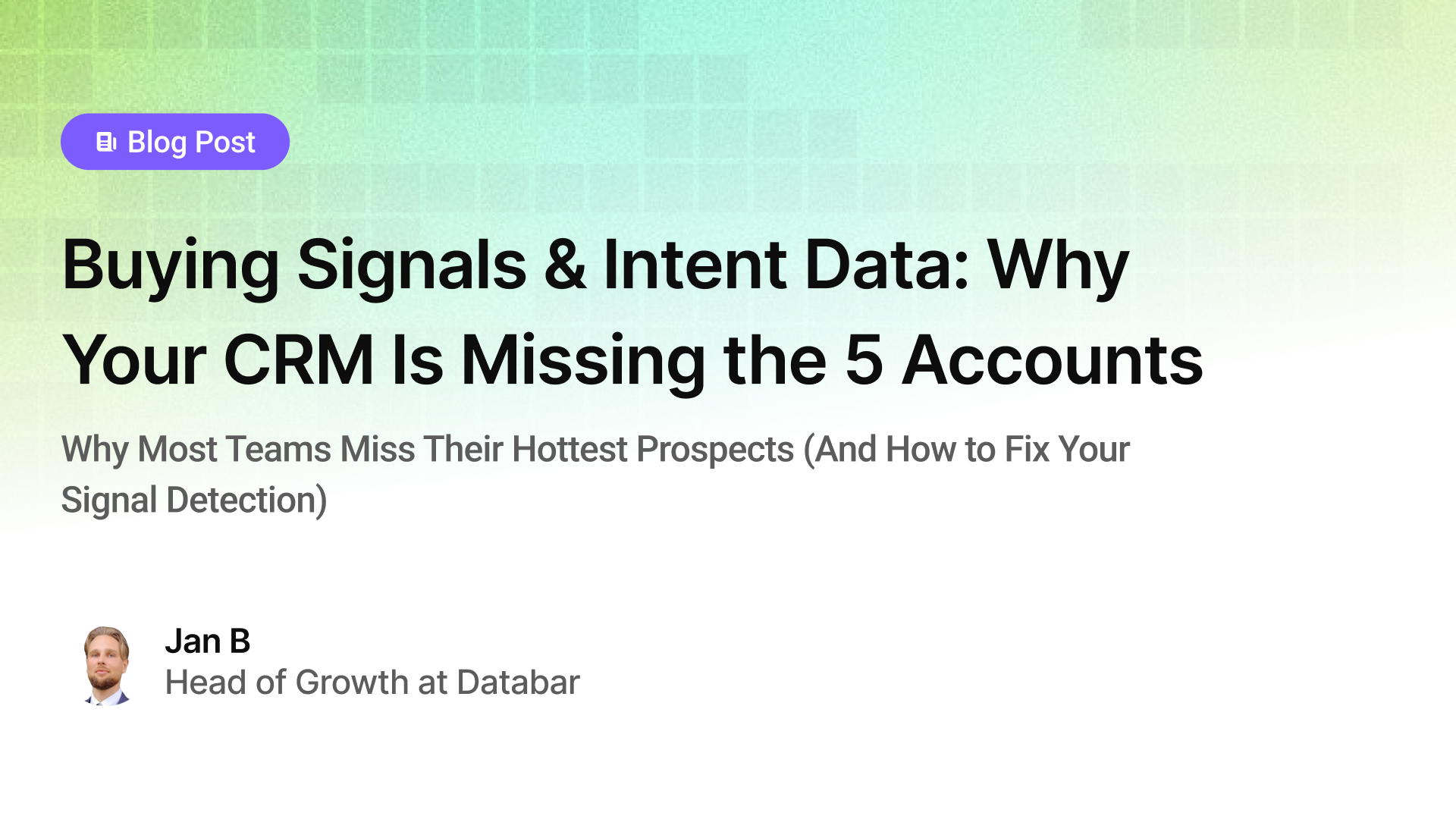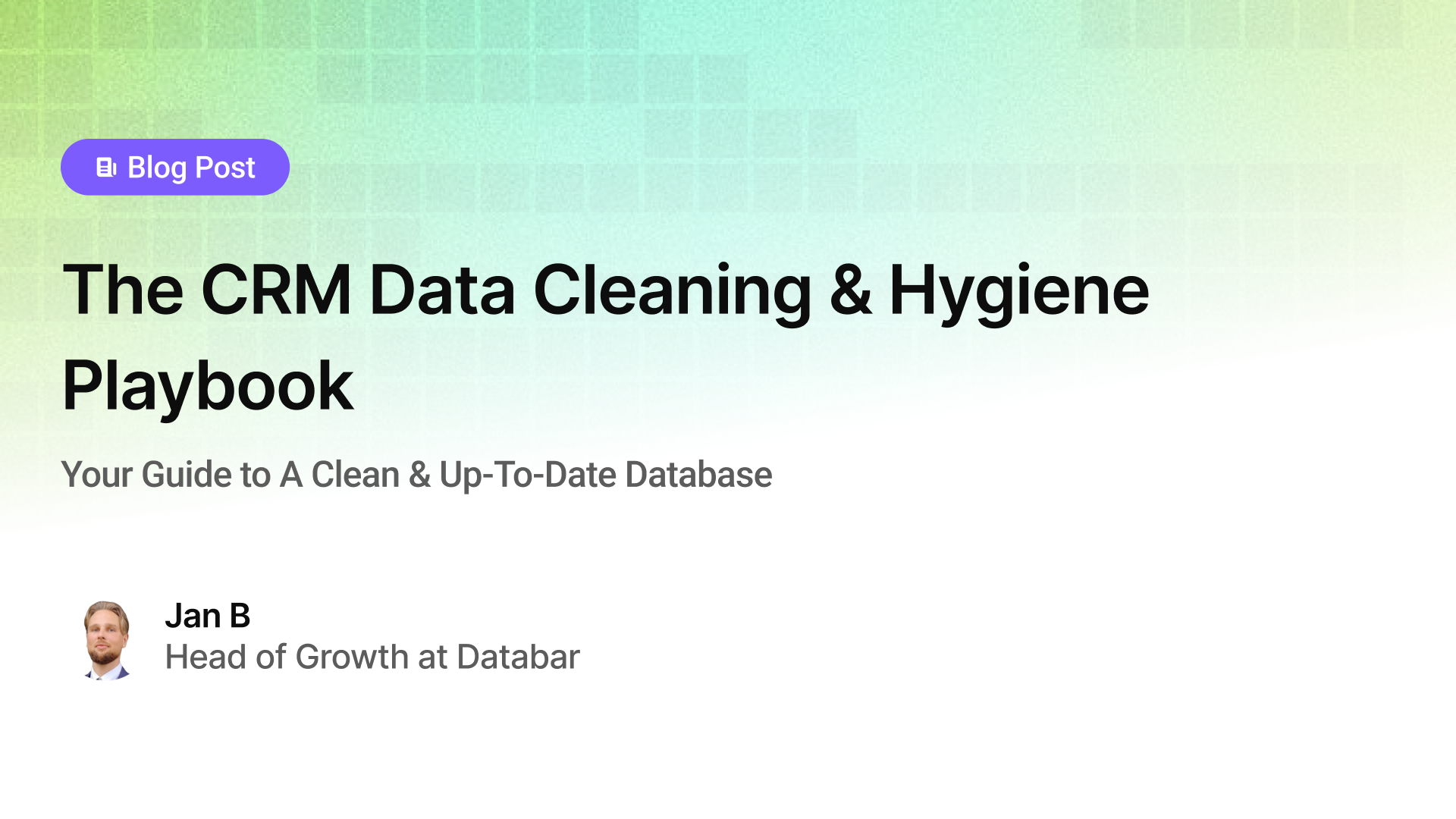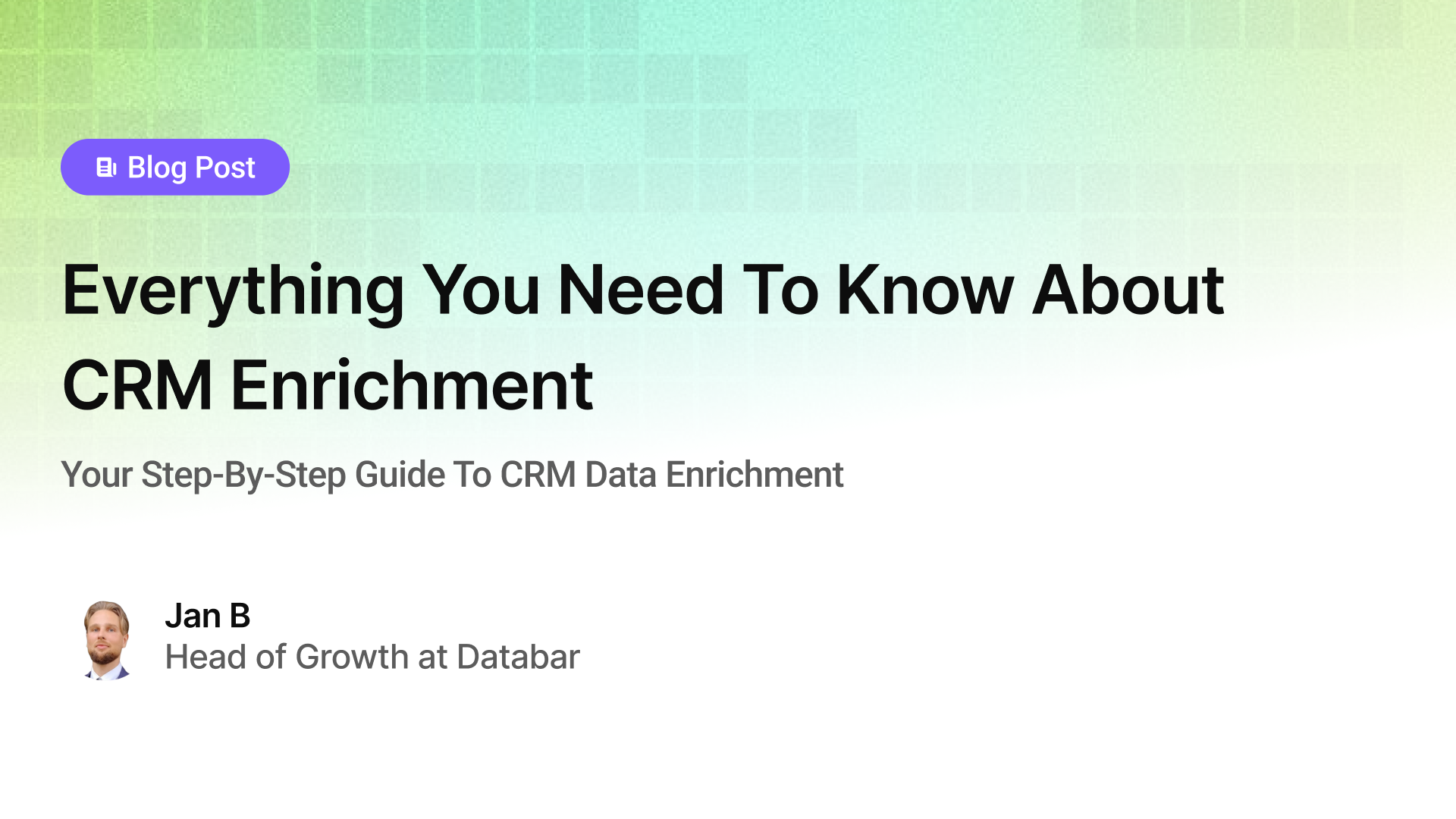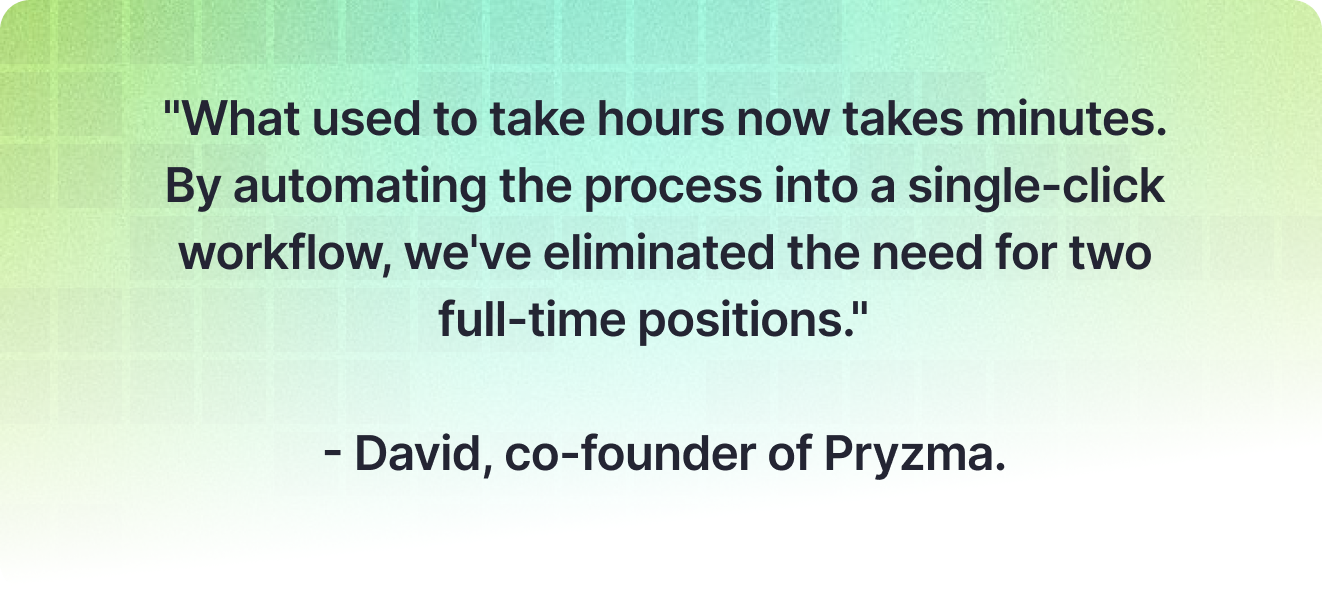Data Enrichment for Marketing Agencies: Scale Client Campaigns
Building Scalable, Personalized Campaigns Through Automated Data Enrichment
Blogby JanJune 27, 2025

Marketing agencies face a brutal reality: 42% of agencies lose clients within the first 12 months due to poor campaign performance and lack of measurable results. The difference between agencies that retain clients for years and those constantly chasing new business? Their ability to deliver personalized campaigns at scale using data enrichment for marketing agencies.
Why Marketing Agencies Need Data Enrichment Now
Agency life means juggling multiple clients, each demanding better results than last quarter. You're managing campaigns for a fintech startup on Monday, a healthcare SaaS on Tuesday, and an e-commerce brand by Wednesday. Each client expects hyper-targeted campaigns that speak directly to their audience - but building detailed customer profiles manually for every client burns through billable hours faster than you can track them.
Data enrichment for marketing agencies solves this scalability problem. Instead of spending days researching prospect details, agencies can automatically enhance client databases with verified contact information, company insights, and behavioral data in minutes.
Consider this: The average agency spends 15-20 hours per week on manual data research across all clients. That's nearly $4,000 in billable time monthly that could be spent on strategy and creative work instead.
The Agency Challenge: Quality vs. Quantity
Most agencies hit a growth ceiling around 10-15 clients. Why? Because traditional campaign management doesn't scale. Each new client multiplies the data management burden:
- Manual list building eats up junior team members' entire days
- Inconsistent data quality across clients leads to campaign failures
- Limited personalization reduces campaign effectiveness
- Time-intensive research prevents taking on new accounts
Without data enrichment, agencies face an impossible choice: limit growth to maintain quality, or sacrifice campaign performance to scale.
What Data Enrichment Means for Agencies
Data enrichment for agencies goes beyond adding email addresses to a spreadsheet. It's about turning basic client data into comprehensive profiles that power sophisticated campaigns.
When a client hands you a list of 5,000 company names, enrichment turns that into:
- Verified decision-maker contacts with direct dials
- Company technographics showing what tools they use
- Recent funding or expansion signals indicating buying readiness
- Employee growth patterns revealing scaling companies
- Social media engagement data for personalization
This transformation happens automatically, across all your clients, without burning through your team's time.
Five Ways Agencies Scale Campaigns with Enriched Data
1. Multi-Client Campaign Automation
Managing campaigns across different industries requires distinct messaging, targeting, and timing. Enriched data enables agencies to run sophisticated multi-client campaigns without multiplying workload.
For instance, your B2B SaaS client needs to target CTOs at companies using outdated competitor tools. Meanwhile, your e-commerce client wants to reach marketing managers at fast-growing retail brands. With proper enrichment, both campaigns run simultaneously using:
- Industry-specific technographic data to identify prospects using specific tools
- Growth indicators to spot companies in expansion mode
- Role-based contact enrichment to reach the right decision-makers
- Behavioral triggers to time outreach perfectly
2. Account-Based Marketing at Scale
ABM traditionally requires extensive manual research - impossible when managing dozens of client accounts. Data enrichment automates the intelligence gathering that makes ABM effective.
Agencies can now deliver ABM campaigns by enriching client target account lists with:
- Complete organizational charts showing all stakeholders
- Technology stack data revealing integration opportunities
- Recent company news and triggers for timely outreach
- Competitive intelligence on current vendor relationships
3. Dynamic Segmentation Across Industries
Every client serves different market segments, but manually maintaining separate segmentation strategies doesn't scale. Enriched data enables dynamic segmentation that adapts to each client's unique needs.
Agencies leverage enrichment and AI to create segments based on:
- Firmographic matching: Company size, revenue, employee count
- Behavioral indicators: Website visits, content engagement, event attendance
- Technographic alignment: Current tech stack and integration potential
- Intent signals: Active research, competitor evaluations, budget cycles
4. Personalization Without the Production Time
Generic messaging kills campaign performance, but crafting personalized content for thousands of prospects across multiple clients seems impossible. Data enrichment changes this equation.
With enriched profiles, agencies can automatically personalize:
- Email campaigns referencing specific company achievements
- LinkedIn outreach mentioning mutual connections
- Content recommendations based on technology usage
- Timing based on prospect timezone and engagement patterns
5. Performance Tracking That Proves Value
Clients demand proof that campaigns drive results. Enriched data provides the attribution and tracking capabilities agencies need to demonstrate ROI.
Enhanced tracking includes:
- Job change alerts when prospects move companies
- Technology adoption signals showing market penetration
- Revenue impact modeling based on enriched company data
How Agencies Implement Enrichment
Choosing Your Data Enrichment Platform
Not all data enrichment tools work well for agencies managing multiple clients. Look for platforms that offer:
Multi-source aggregation: Access to 90+ data providers through one platform eliminates the need for multiple vendor relationships.
Waterfall enrichment: Automatically checking multiple sources until finding needed data ensures maximum coverage without manual intervention.
White-label capabilities: Present enriched data under your agency brand to maintain client relationships.
Bulk processing: Handle thousands of records simultaneously across different client accounts.
Flexible pricing: Pay-per-use models that scale with client needs rather than forcing annual commitments.
Integration with Agency Tech Stacks
Successful enrichment implementation requires seamless integration with existing agency tools:
CRM synchronization: Whether clients use Salesforce, HubSpot, or Pipedrive, enriched data should flow automatically into their systems.
Marketing automation compatibility: Connect with platforms like Marketo, Pardot, or ActiveCampaign to trigger campaigns based on enriched data.
Analytics platform integration: Push enriched data to Google Analytics, Mixpanel, or custom dashboards for comprehensive reporting.
Project management connectivity: Update Asana, Monday.com, or ClickUp with enrichment progress and results.
Building Enrichment Workflows for Different Client Types: Agencies need flexible workflows that adapt to diverse client needs:
Measuring Success: KPIs for Enriched Campaigns
Agencies must prove that data enrichment delivers measurable improvements. Track these metrics across client campaigns:
Data Quality Metrics
- Match rate: Percentage of records successfully enriched (target: 75%+)
- Accuracy score: Verified correct data vs. total enriched (target: 90%+)
- Coverage depth: Number of data fields populated per record
- Freshness index: Age of enriched data (target: <90 days)
Campaign Performance Metrics
- Email deliverability: Reduction in bounces
- Response rates: Increase in campaign engagement
- Conversion lift: Higher close rates from enriched leads
- Time to revenue: Faster sales cycles with better targeting
Agency Efficiency Metrics
- Time saved per campaign: Hours reduced on research (typical: 15-20 hours/week)
- Campaigns per team member: Increased capacity (typical improvement: 2-3x)
- Client retention rate: Longer relationships due to better results
- Profit margin improvement: Higher efficiency means better margins
Common Pitfalls and How to Avoid Them
Over-Enrichment Paralysis
Some agencies get caught up enriching every possible data point. Focus on fields that directly impact campaign performance - job titles, verified emails, company size, and recent triggers matter more than exhaustive demographic profiles.
Integration Bottlenecks
Prevent technical delays by:
- Testing integrations during client onboarding
- Creating template workflows for common use cases
- Training team members on troubleshooting
- Maintaining documentation for each client setup
Case Study Insights: Agency Transformations
While specific client details remain confidential, agencies using modern data enrichment report consistent patterns:
Efficiency gains: Marketing agencies reduce campaign setup time by 60-70% through automated enrichment workflows.
Revenue growth: Agencies handling enriched data report 40% higher average retainers due to superior campaign performance.
Client satisfaction: Net Promoter Scores increase when agencies deliver hyper-personalized campaigns.
Team morale: Account managers spend 75% less time on data tasks, focusing instead on strategy and client relationships.
Pricing Models That Work for Agencies
Traditional data enrichment pricing punishes agencies with per-seat licenses and annual commitments. Modern platforms offer agency-friendly models:
Usage-based pricing: Pay only for records enriched, scaling up or down with client needs.
Client pooling: Aggregate usage across all clients for volume discounts.
White-label options: Maintain your agency brand while leveraging enrichment infrastructure.
No minimums: Start small with new clients and scale as campaigns prove successful.
Getting Started: Your 30-Day Implementation Plan
Week 1: Foundation
- Audit current client data quality and gaps
- Select enrichment platform that meets agency needs
- Map enrichment fields to client CRM requirements
- Create initial workflow templates
Week 2: Pilot Program
- Choose 2-3 willing clients for initial implementation
- Enrich their existing databases
- Set up automated workflows for new data
- Train team on platform usage
Week 3: Campaign Launch
- Deploy first enriched campaigns
- Monitor performance metrics closely
- Gather client feedback
- Document what works
Week 4: Scale and Optimize
- Roll out to additional clients
- Refine workflows based on results
- Create case studies from early wins
- Plan expanded usage
Conclusion: From Service Provider to Strategic Partner
Data enrichment for marketing agencies represents more than operational efficiency - it's the key to evolving from service provider to strategic partner. When you deliver campaigns that consistently outperform expectations, clients stop viewing you as a vendor and start seeing you as essential to their growth.
The agencies thriving in 2025 and beyond won't be those with the flashiest creative or the lowest prices. They'll be the ones who leverage data enrichment to deliver personalized, high-converting campaigns at scale. The question isn't whether to adopt data enrichment - it's how quickly you can implement it before competitors gain the advantage.
Ready to transform your agency's campaign performance? The path from struggling with manual data tasks to scaling successful campaigns starts with choosing the right enrichment partner.
Frequently Asked Questions
How long does data enrichment implementation take for agencies?
Most agencies are up and running within 48 hours. Our fastest implementation was 4 hours for a 12-person agency managing 15 client accounts. The 30-day plan we outlined accounts for thorough testing and optimization across all clients.
What's the typical ROI for agencies using data enrichment?
Agencies report 3-5x ROI within 90 days. The average agency saves $ monthly in labor costs while increasing campaign performance by 40-60%. Most agencies pay for the platform within the first month through improved efficiency alone.
How does data enrichment costs compare to hiring more staff?
A full-time junior researcher costs $40,000-50,000 annually plus benefits. Data enrichment platforms typically cost $2,000-4,000 annually while delivering 10x faster results and higher accuracy. You're replacing salary costs with technology that scales infinitely.
Can we white-label the enrichment solution for clients?
Yes, most modern platforms offer white-label capabilities so enriched data appears under your agency brand. Clients see improved results without knowing the underlying technology, maintaining your position as their strategic partner.
What if our clients use different CRMs and marketing platforms?
Quality enrichment platforms integrate with all popular business tools including all major CRMs (Salesforce, HubSpot, Pipedrive), marketing automation platforms (Marketo, Pardot, ActiveCampaign), and project management tools. Data flows seamlessly regardless of your client's tech stack.
How do we handle enrichment for different industries?
The best platforms provide industry-specific data fields and filters. Whether your clients are in SaaS, e-commerce, healthcare, or professional services, you can customize enrichment workflows to capture the data points most relevant to each industry's buying patterns.
Related articles

Buying Signals & Intent Data: Why Your CRM Is Missing the 5 Accounts
Why Most Teams Miss Their Hottest Prospects (And How to Fix Your Signal Detection)
by Jan, October 06, 2025

Lead Scoring & Account Segmentation: Why Most CRMs Get This Backward (And How to Fix It)
How to build a system that tells your team who to call, when, and why
by Jan, October 06, 2025

The CRM Data Cleaning & Hygiene Playbook
Your Guide to A Clean & Up-To-Date Database
by Jan, October 04, 2025

Everything You Need To Know About CRM Enrichment
Your Step-By-Step Guide To CRM Data Enrichment
by Jan, October 03, 2025


